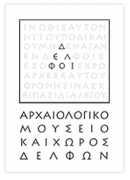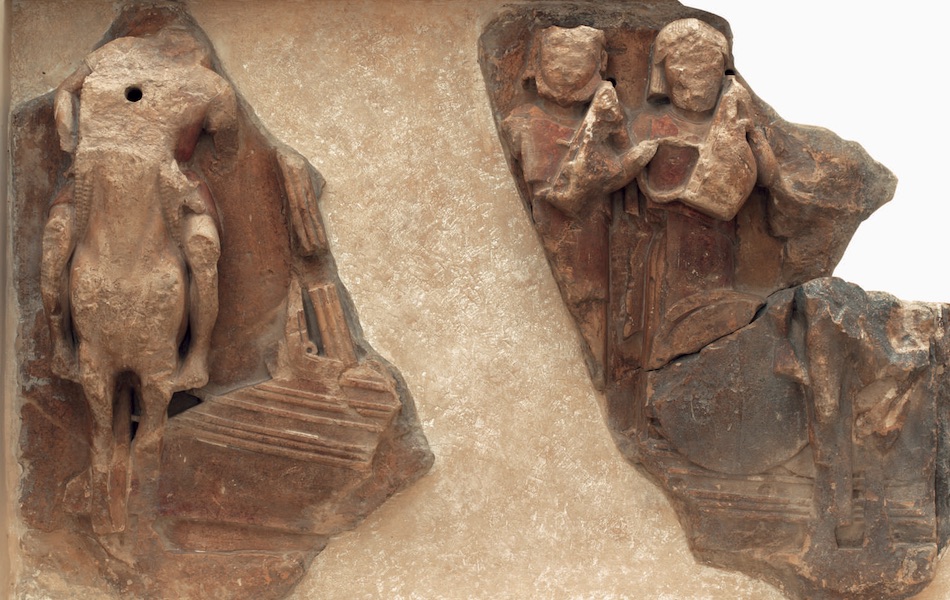[shortcode-weather-atlas selected_widget_id=18dc4732]
The inauguration of the first Museum
On may 2nd 1903 the Great Excavation was accomplished triumphantly with the inauguration of the museum which was going to host the finds. The construction of the museum had been funded by a trust established by the Greek politician and benefactor Andreas Syngros. Present at the ceremony was the French minister of Education and a several personalities of international calibre. The museum was designed by the French architect of the excavations Α. Tournaire. The museographic approach by Homolle was an attempt at a restoration of the monuments within the museum with the use of gypsum casts, so that the sculptures would be presented “in context”. Although the exhibits had not been studied in great detail beforehand and despite the fact that they absorbed all space extant, their presentation to the public was hailed with enthusiasm all over the world, as the publications in the foreign and Greek press throughout the excavations were incessant.
The second generation of archaeologists: 1903-1939
In the course of the next thirty years several prominent Greek and foreign archaeologists and researchers worked at Delphi: A.Keramopoullos, G. Miliadis and C. Romaios, H. Van Effenterre, J. Jannoray, Georges Daux and the nobleman Pierre de la Coste Messelière. They studied the finds, ended up in new archaeological conclusions, criticized Homolle and his team for the prerogative they gave to architecture against minor arts and, to a certain extent, against plastic arts as well (Miliades for example criticized the “Roman indifference” of the French for exhibiting the Charioteer in a totally unsuitable position) and they finally exercised pressure towards the creation of a new museum. After all, the Delphic Festivals organized by Angelos Sikelianos and his wife, Eva Palmer, brought Delphi back on the international stage, due to the prestigious visitors, among whom many foreign members of the international cultural jet set.
The second museum
Within the years 1935-38 a new museum was built, inspired by the architectural style of the Interwar period. The new exhibition of the finds was accomplished in 1939 following a totally different, more scholarly approach: the plaster casts were removed, the antiquities were arranged chronologically and studied in depth. However, this exhibition never opened for the public. The outbreak of World War II led the authorities to the decision to bury the antiquities or take them to Athens. The Charioteer was “hosted” in the crypts of the National Archaeological Museum, whereas the chryselephantine statues and the silver bull, which had just been discovered in a pit under the pavement of the Sacred Way, were taken to the vaults of the National Bank of Greece. The Museum didn’t reopen until after 1950, because during the civil war Delphi was a military zone. The antiquities returned gradually to their positions and the broader public managed to finally visit the new exhibition.
The third phase of the Museum
Six years later, however, it became clear that the Museum needed a new extension. It was decided that they would extend and refurbish the existing building and the architect Patroclos Karantinos prepared the plans. The new approach was the result of the collaboration of the Ephor of Antiquities Ioanna Konstantinou and of Christos Karouzos, director of the National Archaeological Museum. The new Delphi Museum opened its gates in 1961, at the time when the economic and cultural regeneration of Greece brought in the country new waves of visitors, eager to admire the ancient beauty and spirit.
The Museum of the 21st century
Οne century after the first inauguration of the museum a new exhibition took place, aiming at the enhancement of some of the exhibits, such as the Charioteer and the gold and ivory statues as well as at the compatibility of the museological approach with the new scholarly conclusions stemming from the ongong study of the objects.
The architectural design was undertaken by A. Tombazis. As Rozina Kolonia, former Ephor of Antiquities of Delphi, notes in the guidebook of the Museum, the exhibits are displayed in a way that they “compose a historical novel, the pages of which run across twelve centuries of history and archaeology: they narrate through museography the political, religious and ´artistic activity of the most renowned sanctuary of paganism and of its oracle.”
MUSEUM OF DELPHI









